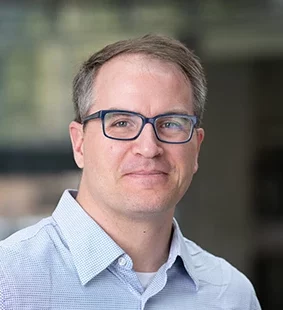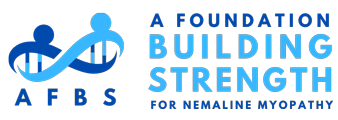A few years ago, AFBS funded a very ambitious project by Dr. Jim Dowling (Sickkids Children’s Hospital, Canada) exploring the potential application of the Nobel Prize-winning CRISPR/Cas9 gene-editing technology to Nemaline Myopathy (NM) therapeutics. The expectation was to generate proof of concept of its applicability and create a translational option into future application in NM affected individuals.
Dr. Dowling and his research team used a “(DNA) cut and repair” strategy with CRISPR/Cas9 to show that they can replace exon 55 in cells from patients with NEB exon 55 deletion. Thanks to a generous donation by the Greenwald Family Foundation, they are now working on the critical step of testing this strategy in a mouse model of NEB related nemaline myopathy.

The research team uncovered a fundamental roadblock in the NEB mouse model, a novel feature of the exon 55 in mice (previously undiscovered) that significantly decreased the efficiency of the tested therapy. After shifting their focus to correct the problem, they now have a potential solution. They also have additional potential solutions to increase the chances of success.
Dr. Dowling and his team have now developed a new humanized mouse line. This humanized mouse is amenable to testing reagents that are directly and quickly suitable for translating to patients. They have already successfully obtained F1 generation stable germline mice and they are currently generating F2 mice to begin the therapy test experiments.
Although roadblocks in scientific experimentation is a common event, affected families desperate for treatment understandably feel disappointment. However, AFBS’ Scientific Director, Gustavo Dziewczapolski, strongly highlights that unexpected setbacks often make positive progress in improving the tools and technology, and generate better ideas and strategies.
In this particular case, Dr. Dowling’s team is now evaluating simultaneously adding experimental strategies that could accelerate progress towards therapies. Besides the use of the improved mouse model, they will add 3 alternative therapeutic strategies:
- They will use lipid nanoparticles to deliver Cas9 (instead of AAV viral vectors) as it has been shown to promote better cut efficiency (when combined with AAV delivery of guide + repair template). This should not delay their progress but increase their chances of finding the best delivery system for their “Genetic Repairment Kit”.
- They are also designing and evaluating the use of an alternative repair methodology called PASTE. This uses an integrase-based insertion strategy and has been shown to be significantly more effective for repair/insertion.
- They will also plan to test a smaller version of the Nebulin gene, a “mini Neb” as an alternative to the “cut and repair” strategy.
Is the research team on schedule to hit all of their milestones?
The team is “on schedule” to show whether or not a HITI mediated, Cas9 “cut and repair” strategy can successfully replace exon 55 in mice. They have preliminary data related to the feasibility and efficacy of an alternative repair strategy called PASTE. They also have preliminary data related to whether they can successfully deliver a “mini Neb” in an animal model. This alternative strategy, if successful, may be suitable for treating any/all NEB related NM.
Special thanks to the Greenwald Family Foundation for their generous contributions to support this research study.


Is this feasible for SLONM?
Hi Dru, Unfortunately no. Dowling’s research is directed to congenital nemaline myopathy. SLONM has a different etiology and this specific research will not work for SLONM. However, hopefully some learnings from this research will help advance treatment research for SLONM too.